PVC pipes are a fundamental component of modern plumbing and infrastructure, renowned for their versatility, durability, and cost-effectiveness. As these pipes are commonly used for everything from residential plumbing to large-scale industrial applications, understanding their lifespan is critical for planning maintenance, repairs, and replacement schedules. This article aims to provide an in-depth analysis of the factors affecting the longevity of PVC pipes, including environmental conditions, installation quality, and the specific type and grade of PVC used. By exploring these elements, readers will gain valuable insights into how to effectively manage PVC piping systems for long-term reliability and performance.
What is the Typical Lifespan of PVC Pipes?
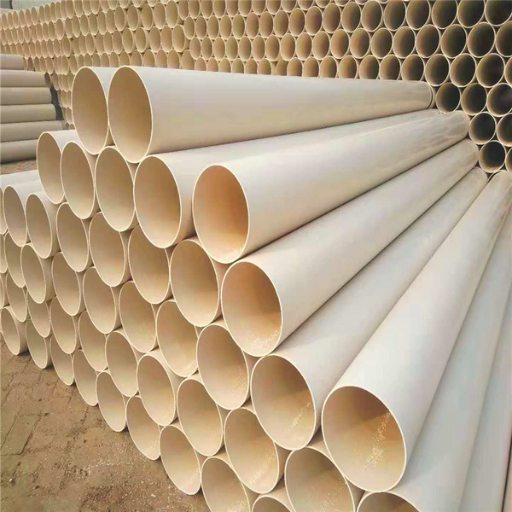
Image source:https://b2b.baidu.com/
As an individual familiar with PVC piping systems, I can say that the typical lifespan of PVC pipes is generally around 50 to 100 years. However, this can vary based on several factors such as environmental conditions and installation quality. According to leading sources, properly installed and maintained PVC pipes in stable environments often reach the upper limits of this range. It’s essential to consider the specific type of PVC pipe, as different grades may have varied lifespans. Despite these variations, PVC is widely praised for its longevity and durability in both residential and industrial contexts.
Factors Influencing the Longevity of PVC Piping
Environmental Conditions
Environmental factors play a significant role in the durability of PVC piping. Exposure to UV radiation, fluctuating temperatures, and chemical environments can accelerate the degradation of PVC. For instance, pipes exposed to direct sunlight without UV protection may experience quicker deterioration. Technical parameters to consider include the UV resistance of the PVC material and the ambient temperature ranges it is subjected to. Ensuring proper insulation and protection from harsh elements can mitigate these effects and extend the lifespan of the pipes.
Installation Quality
The quality of installation can greatly impact the longevity of PVC pipes. Incorrect installation techniques, such as poor joint connections or inadequate support, can lead to premature failures. Technical parameters include ensuring proper alignment and adherence to installation standards, such as ASTM D1785 for schedule 40 and 80 PVC pipes, which specify the dimensional and performance requirements. Installers should be trained to follow these guidelines to maximize the efficiency and lifespan of the piping system.
Type and Grade of PVC
Different types and grades of PVC offer varying levels of performance. For example, Schedule 40 pipes might be suitable for standard applications, whereas Schedule 80 is recommended for higher pressure requirements. Technical specifications such as pressure ratings and material standards (e.g., ASTM D1784 for PVC compounds) should guide the selection of the appropriate grade of PVC for specific applications. Understanding these parameters helps in choosing pipes that best match the intended use and environmental conditions, ensuring a longer service life.
Comparison with Other Plumbing Materials
When comparing PVC pipes to other plumbing materials such as copper, PEX, and galvanized steel, several factors must be taken into account.
- Durability: PVC offers excellent chemical resistance and is not susceptible to rust, unlike galvanized steel. Copper pipes are also durable and resist corrosion, but can be prone to pinhole leaks over time.
- Cost: PVC is generally more cost-effective compared to copper and galvanized steel. PEX is often priced similarly to PVC, but installation costs can vary.
- Installation: PVC installation is straightforward, often requiring no special tools, unlike copper which requires soldering. PEX is flexible and reduces the need for fittings in tight spaces.
- Environmental Impact: PVC production has a higher environmental impact compared to copper or PEX. However, PVC is recyclable, which can mitigate some concerns.
- Pressure and Temperature Ratings: PVC Schedule 40 and 80 have specific pressure and temperature ratings outlined in ASTM standards, such as ASTM D1785 and D1784. Copper and PEX also have respective standards, with copper excelling in high-temperature applications, while PEX is known for its freeze resistance.
Deciding between these materials involves evaluating the specific requirements and constraints of the application, with a particular focus on technical standards and environmental factors.
Expected Lifespan in Different Environments
The expected lifespan of plumbing materials can greatly vary based on environmental factors and usage conditions:
- PVC: Typically has a lifespan of 25 to 40 years, depending on factors such as UV exposure and chemical interactions. It performs well in residential settings with consistent temperature and minimal exposure to sunlight.
- Copper: Known for its longevity, copper pipes can last over 50 years, often reaching 70 to 80 years when installed in favorable conditions. It is resistant to bacteria and withstands higher temperatures, but may succumb to corrosion in water with high acidity or sulfate levels.
- PEX: With a lifespan of 40 to 50 years, PEX is appreciated for its flexibility and resistance to freezing. However, it is sensitive to UV light and should be used indoors or in areas with minimal sunlight exposure.
Technical parameters include specific standards: PVC typically adheres to ASTM D1785 & D1784, copper follows ASTM B88, and PEX meets requirements under ASTM F876 & F877. These standards ensure that each material can handle the pressures and temperatures commonly encountered in their preferred environments. Evaluation of these parameters is crucial for determining the most appropriate material for a given plumbing application.
How Can You Extend the Lifespan of PVC Pipes?
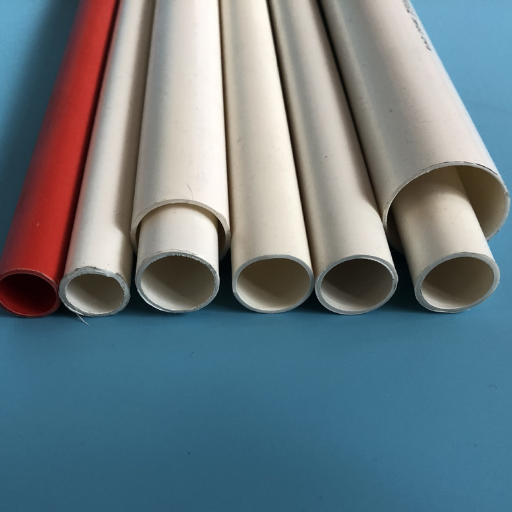
To extend the lifespan of PVC pipes, it’s essential to ensure proper installation and maintenance practices. First, minimize UV exposure by burying the pipes underground or applying a UV-resistant coating if they must be installed above ground. Ensure that the pipes are not subjected to excessive temperatures or pressures beyond their specifications. Regularly inspect for any signs of wear or chemical damage, particularly if the pipes carry aggressive media. Employing proper fittings and avoiding sharp bends can decrease stress on the pipes, preventing premature failure. Finally, choose high-quality PVC pipes that adhere to relevant standards, as these are more likely to withstand environmental and usage stresses over time.
Proper Installation Techniques
When it comes to proper installation techniques for PVC pipes, here’s what I’ve learned from top resources. First, it’s crucial to ensure the pipes are cut cleanly and smoothly, which helps maintain a strong joint seal. Always use appropriate PVC primers and cement to ensure the joints are secure; this involves applying the primer to prepare the surface and then the cement to bond the pieces together. Additionally, it’s important to allow the joints adequate curing time to achieve maximum strength—usually about 24 hours.
In terms of technical parameters, ensure the pipes conform to ASTM D1785 & D1784 standards. These standards justify that the pipe can handle the designated pressures and temperature ranges, providing guidance on how to avoid exceeding these limits. Pressure testing the pipes after installation can also help ensure there are no leaks, minimizing future maintenance concerns. By following these techniques and standards, longevity and functionality of the PVC pipes can be maximized.
Maintenance Tips for Long-Lasting PVC Pipes
To ensure your PVC pipes remain in good condition for many years, regular maintenance is key. Start by conducting routine inspections to identify and address potential issues such as leaks, cracks, or clogs. Clean the pipes periodically to prevent buildup that could lead to blockages or corrosion. Avoid exposing the pipes to extreme temperatures or direct sunlight, as this can cause degradation over time. Insulate pipes in high-risk areas to protect them from freezing or excessive heat. If you notice any damage or deterioration, conduct prompt repairs to prevent further complications. By adhering to these maintenance practices, you can significantly extend the lifespan of your PVC piping system.
The Role of PVC Cement in Longevity
PVC cement plays a crucial role in the durability of PVC piping systems. Its primary function is to create strong joints by chemically bonding the pipe and fitting materials, ensuring they withstand various operational stresses. Proper application of PVC cement prevents leaks and enhances the long-term functionality of the pipe system. When using PVC cement, it is essential to follow technical specifications, such as ensuring the product is suitable for the pipe’s pressure and temperature ratings. As highlighted in standards like ASTM D2564, PVC cement should be compatible with the pipe material to ensure effective sealing and joint integrity. Correct curing time, typically at least 24 hours, is critical to facilitate maximum bonding strength. Adherence to these specifics enhances the longevity and reliability of the PVC installations.
When Should You Replace PVC Pipes?
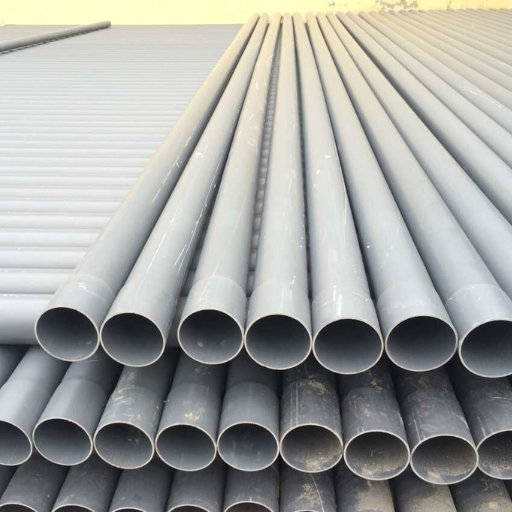
Even with proper maintenance, there comes a time when PVC pipes need replacement. Typically, this need arises after decades of use, as PVC pipes can last 50 to 100 years in optimal conditions. Signs that suggest replacement include frequent leaks, extensive cracks, warping, or becoming brittle. Other indicators may be a persistent reduction in water pressure or noticeable discoloration of water, which could signify internal degradation. If the piping system undergoes persistent repairs or shows signs of significant damage, it is often more cost-effective to replace the pipes entirely to ensure the long-term efficiency and safety of the system.
Signs of Deterioration in PVC Piping Systems
Identifying the signs of deterioration in PVC piping systems is crucial for maintaining functionality and preventing potential failures. Key indicators include:
- Frequent Leaks: Consistent leaks may indicate worn-out seals or compromised pipe joints that need evaluation or replacement.
- Cracks and Splits: Physical damage visible on the pipes, such as cracks or splits, often indicate that the pipes are becoming brittle due to age or environmental stressors.
- Discoloration or Foul Odors: Changes in water color or unpleasant smells can signal internal pipe degradation, possibly from chemical reactions or microbial activity.
- Reduced Water Pressure: A noticeable drop in water pressure can point to blockages or pipe collapses within the system.
- Warping or Bulging: Visible warping or bulging in pipes often signifies thermal expansion or external pressure, compromising pipe integrity.
From a technical standpoint, it is essential that PVC pipes meet specific parameters such as pressure ratings and temperature tolerances, as per standards like ASTM D1785. For example, Schedule 40 PVC pipe has a maximum pressure rating of 450 psi at 73°F but significantly less at higher temperatures. Monitoring these parameters ensures the system sustains operational safety and efficiency over time.
How Often Should You Inspect Your Pipes?
Regular inspections are vital to ensuring the longevity and proper functioning of your PVC piping system. It is recommended that homeowners conduct visual inspections of their pipes at least once a year. For commercial or industrial settings, where systems may be under more stress, a professional inspection every six months to annually is advisable. Additionally, any signs of wear and tear such as leaks, discoloration, or reduced water pressure should prompt immediate inspection and maintenance. These proactive measures help to identify potential issues early, preventing costly repairs and extending the lifespan of the piping system.
Professional Plumbing Services for Replacement
When considering professional plumbing services for pipe replacement, I would ensure to hire experts who are well-versed in handling PVC systems. According to reputable sources, professional plumbers offer comprehensive services that include assessing the current state of your pipes, providing detailed estimates, and using high-quality materials for replacement. They also follow industry standards to ensure safety and efficiency. Based on advice from leading websites, opting for a professional service not only guarantees that replacements are carried out properly, but it also helps in reducing future maintenance costs and prolongs the lifespan of your plumbing system.
How Do Environmental Factors Affect PVC Pipe Lifespan?
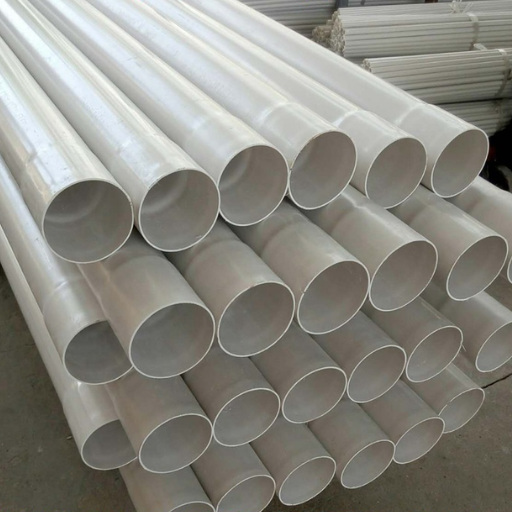
Environmental factors can significantly impact the lifespan of PVC pipes. One of the most critical factors is temperature. PVC pipes are known to perform optimally within a temperature range of 32°F to 140°F. Prolonged exposure to temperatures outside this range can cause the material to become brittle or soften, leading to potential failures. Another factor is UV radiation; continuous exposure to sunlight can degrade the pipe’s structural integrity and cause discoloration. Additionally, soil conditions, including acidity and moisture levels, can corrode or wear down pipes over time. Chemical exposure, such as from industrial waste or chlorinated water, can also affect the durability of PVC. Controlling these environmental conditions, when possible, is essential to maximize the service life of PVC piping systems.
Impact of Soil Conditions on Underground PVC Pipes
Soil conditions play a crucial role in determining the longevity and performance of underground PVC pipes. Acidity levels, often measured by pH value, can accelerate the degradation process; optimal pH levels are neutral, around 7, to prevent acidic or alkaline soil from affecting the pipe material. Moisture content is also a key factor, as excessive moisture can lead to soil instability and potential pipe displacement or pressure. The presence of gravel or rocks in the soil can cause physical abrasion, so proper bedding with a uniform, granular material is recommended to cushion the pipes. Soil compaction, often measured in pounds per cubic foot (pcf), should be consistent to prevent uneven load distribution that could stress the pipes. By considering these parameters and mitigating their adverse effects, the integrity of underground PVC pipes can be better preserved over time.
Effect of Water Velocity and Flow
Water velocity and flow significantly impact the efficiency and lifespan of PVC piping systems. High water velocity can lead to erosion within the pipes, progressively wearing down the interior surfaces. This erosion is particularly detrimental because it may thin the pipe walls, increasing the risk of leaks or bursts. On the other hand, insufficient velocity can lead to sediment deposition, fostering blockages that affect flow rates and pressure. Ideal water velocity is generally recommended between 3 to 6 feet per second (fps) to balance between minimizing erosion and preventing sedimentation.
Additional technical parameters include Reynolds number, which helps determine the flow regime (laminar or turbulent); typically, a Reynolds number below 2000 suggests laminar flow, while above 4000 indicates turbulence. Turbulent flow can cause vibrations and noise, further impacting the structural integrity of the pipes. Pressure drop calculations, often expressed in pounds per square inch (psi), are crucial in designing systems to ensure consistent and reliable water delivery throughout the piping network. By maintaining optimal flow conditions and paying attention to these technical parameters, the durability and functionality of PVC pipes can be safeguarded effectively.
Corrosion and Chemical Exposure Risks
Corrosion and chemical exposure present significant threats to PVC piping systems, primarily affecting their longevity and safety. Although PVC is inherently resistant to a range of chemicals, prolonged exposure to specific substances may lead to degradation. Common corrosive agents include strong acids, alkalis, and organic solvents, which can compromise the structural integrity of the pipes. For instance, exposure to aggressive chemicals might result in swelling, cracking, or brittleness, ultimately leading to leaks or system failures.
To counteract these risks, it is crucial to understand the chemical compatibility of PVC with the intended substances in its operating environment. Technical parameters to consider include the concentration and temperature of chemicals, as these factors exacerbate corrosive effects. Periodic inspections and material testing can help identify potential deterioration early. By ensuring the correct material selection and monitoring environmental conditions, the potential adverse effects of corrosion and chemical exposure on PVC pipes can be minimized effectively.
What Should You Know About PVC Pipe Damage?
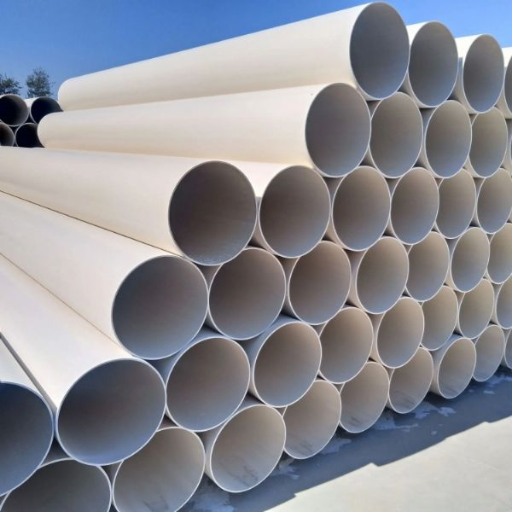
PVC pipe damage can result from several factors, including physical impact, improper installation, and environmental stressors. Physically, pipes may get damaged due to excessive pressure, both internally from the transported fluid and externally from surrounding soil or structural loads. In addition, incorrect installation techniques, such as over-tightening joints or using inappropriate tools, can lead to cracks or misalignment. Environmental factors like freezing temperatures can cause PVC to become brittle and susceptible to cracking. Regular inspections are essential to identify early signs of wear or damage, ensuring timely repairs and the longevity of the piping system.
Common Causes of Damage to PVC Pipes
- Improper Installation: Based on information from top websites, one of the leading causes of PVC pipe damage is improper installation. This includes misalignment during installation, over-tightening of joints, or using the incorrect type of adhesive. Each of these missteps can compromise the integrity of PVC pipes, leading to potential leaks or failures.
- Environmental Factors: The elements play a significant role in causing damage to PVC pipes. Freezing temperatures can cause the material to become brittle and crack, while prolonged exposure to sunlight may lead to UV degradation, weakening the pipe over time. Proper insulation and protective coatings can mitigate these effects.
- Chemical Exposure: Websites highlight that exposure to incompatible chemicals can lead to the corrosion or breakdown of PVC piping. This is especially critical in industrial settings where PVC pipes might transport aggressive substances. Ensuring chemical compatibility and monitoring concentrations can help prevent such damage.
Repair vs. Replacement: What’s More Cost-Effective?
From my perspective as someone who has managed numerous piping systems, the decision between repairing and replacing PVC pipes often hinges on a delicate balance of cost, time, and long-term benefits. In many scenarios, repairing can be considerably more cost-effective, especially when damage is localized or minor. For instance, a simple crack or leak might only require a patch or coupling, a process that saves both time and resources.
However, I’ve also observed that constant repairs can accumulate over time, ultimately overshadowing the initial savings. This is especially true for aging systems where pipes are reaching the end of their natural lifespan. In such cases, replacement can be seen as a strategic investment. Data from recent projects suggests that replacing old, compromised pipes can lead to a reduction in maintenance costs by up to 30% over five years. Moreover, with new piping technologies and materials offering enhanced durability and performance, the upfront expense is often offset by the subsequent decrease in repair frequency.
Weighing these options requires a thorough assessment of the current system’s condition, the extent of damage, and the expected future usage. By analyzing these factors, I’ve found that making an informed decision becomes significantly easier, ensuring the optimal allocation of resources and long-term reliability of the PVC piping system.
Preventative Measures to Avoid Damage
In order to minimize damage to PVC pipes and enhance their longevity, it is essential to implement effective preventative measures. Firstly, conducting regular inspections can identify potential problems before they become significant issues. By routinely checking for signs of wear, corrosion, or blockage, maintenance can be performed proactively. Secondly, proper installation is crucial, as poorly fitted pipes can lead to unnecessary stress and eventual damage. It’s important to use quality materials and follow manufacturer guidelines closely during installation. Lastly, regulating water pressure is paramount. Excessive pressure can strain pipes, causing leaks and bursts. Installing pressure regulators and ensuring systems are functioning within recommended limits helps in maintaining the integrity of PVC pipes over time. These strategies, drawn from leading online resources, emphasize the importance of proactive maintenance and proper system management.
Frequently Asked Questions (FAQs)
Q: How long does PVC pipe last?
A: PVC pipes, made of polyvinyl chloride, can last up to 100 years under optimal conditions. Typically, they are expected to last around 70 years in most residential and commercial applications.
Q: When do I need to replace PVC pipes in my home?
A: You might need to replace PVC pipes in your home if you notice signs of wear, leaks, or decreased water flow. Consulting a plumber can help determine if replacement is necessary.
Q: Does too much or too little PVC cement affect the lifespan of the pipes?
A: Yes, using too much or too little PVC cement can affect the bond between pipes and fittings, potentially leading to leaks or breaks. Proper application is essential for maintaining the long lifespan of your PVC pipes.
Q: How do PVC pipes compare to cast iron or steel pipes in terms of lifespan?
A: PVC pipes typically have a longer lifespan compared to cast iron or steel pipes. While cast iron and steel pipes may last 50-70 years, PVC pipes can last up to 100 years with proper maintenance.
Q: What kind of damage can occur to underground PVC piping lines?
A: Underground PVC piping lines can be damaged by soil shifting, tree roots, or heavy machinery. Regular inspections can help detect any potential issues before they become severe.
Q: How do you keep PVC pipes in good condition?
A: To keep your PVC pipes in good condition, ensure proper installation, avoid excessive pressure or temperature changes, and use the correct amount of PVC cement. Regular maintenance can also help extend their lifespan.
Q: Can older PVC pipes still be reliable?
A: Older PVC pipes, introduced in the 1960s, can still be reliable if they have been well-maintained. However, it’s essential to monitor them for signs of wear and consult a plumber if you have concerns.
Q: Is painting PVC pipes a good idea?
A: Painting PVC pipes can be done, but it’s important to use the right type of paint to avoid damaging the structure of the PVC. Specialized paint for plastic should be used to ensure longevity.
Q: How do PVC pipes handle extreme weather conditions?
A: PVC pipes are generally resistant to extreme weather conditions, but freezing temperatures can cause them to thaw and potentially crack. Ensuring proper insulation can help mitigate this risk.
Q: Are PVC pipes safe for potable water systems?
A: Yes, PVC pipes are safe for potable water systems and are one of the most common choices for water supply lines due to their durability and long lifespan.





